2015 Volkswagen Golf Review

Volkswagen wants higher sales volumes in North America and so far, that’s proving to be a tough brass ring to pull down. Alone the Golf isn’t enough to fix that, but it will play a key role in making it possible.
FAST FACTS
| Engine: 1.8L turbo four makes 170 hp and 200 lb-ft of torque |
| Transmission: Five speed manual or six-speed automatic. |
| Price: $18,815 for the limited production launch model, $19,815 for the S and up to $27,815 for the grand poobah SEL trim. |
| Fuel economy: 26 MPG city, 37 MPG highway, 31 average observed. |
If you’ve been watching the automotive media over the last year, there’s a good chance you know that the seventh generation Golf and its derivatives aren’t really new. In fact, it’s been about a year since they arrived in showrooms overseas.
Em-Cue-Bee
Car nerddom comes with a status card and there’s a test prerequisite to holding one. On filled copies of that scroll, you’ll find a few things: tears drawn from years of loneliness, a smudge or two of soiled motor oil and probably some scrawling about the structures that underpin the cars being marketed at this housewife or that hedge fund manger. You see, it’s what’s inside that counts.
In Volkswagen’s case, the guts are really interesting. Currently, its models are in the midst of an exodus to the “MQB” platform. That stands for something in German, but it translates to “modular transverse matrix” in English. It’s the structure that will underpin a long list of models from Volkswagen Group that includes the new Golf.
For Volkswagen, MQB boils down to parts sharing and the economies of scale and that should matter to you. Not because someone in Germany is saving money, but because the Golf costs less in its seventh generation. Furthermore, Volkswagen added content for the 2015 model year that, it says, represents an even more substantial discount over the outgoing model. Truth be told, Volkswagen’s discount claims amount to questionable marketing shenanigans from a pure price perspective, but the point is that VW is upping the bang-for-your-buck factor this time around.
Newly Styled Body, We Swear
You might not pick out what makes the MK7 Golf look new right away. In fact, you might buy one, drive it home and barring a side-by-side comparison, your contemptible neighbors – who happen to be loyal and outspoken Saab owners – may go years without realizing that you bought the newest model. Beside its predecessor, the new Golf does have noticeably different styling. But take the old car away and those differences suddenly seem negligible. Sure, the angles are sharper, but it really doesn’t change that much.
At the most basic level, you get 15-inch steel wheels hidden behind plastic hubcaps, but there are 16, 17 and 18-inch alloys available through the product range. No matter what, they come wrapped in all-season tires.
MQB Means Better Driving Dynamics
By being based on MQB, the Golf grows larger for 2015. It becomes 2.1 inches longer and half an inch wider while sitting 1.1 inches lower than before.
The platform transition also improves chassis stiffness and reduces the overall weight by up to 79 lbs. A new suspension also supposedly contributes to improved handling dynamics, but the truth is that the Golf isn’t the best choice if you want driving dynamics above all else. If that’s what you want and a GTI is too expensive, the Mazda3 is your car.
Having made that assertion, the Golf really is very well refined. For an unassuming compact hatchback, it remains reasonably composed during hard lane changes and the steering wheel avoids feeling numb like a Nissan Sentra. That wheel really is a pleasure to hold, too. It feels like a skinnier version of the “sport” steering equipment you would find in an Audi product.
Volkswagen also added its “XDS Cross Differential” system previously reserved for the GTI hot hatch to the standard equipment list. It mimics a limited-slip differential by applying braking force to the inside front wheel to enhance cornering capability.
All that and we haven’t even mentioned the powertrain. It, like the rest of the car, is new. For 2015, the Golf gets a 1.8-liter turbocharged four-cylinder in place of the old 2.5-liter four. It makes 170 HP at 4,500 rpm and 200 lb-ft of torque at a worm-getting 1,600 rotations per minute. That’s pretty early and most of the power feels available low in the rev range. Mated with the five-speed manual – yes it’s weird that they haven’t added a sixth speed – the powerband is forgiving. If anything, it prompts you to shift early because the later RPMs offer a rapidly diminishing rate of return. In other words, you’ll tend toward driving habits that bring more miles per gallon.
VW postulates that the appreciable difference in fuel consumption between the turbo 1.8 and old 2.5 will add up to a 20 percent savings. In plainer terms, they say the car will return 26 MPG in city driving and 37 on the highway with a five-speed manual or one mile per gallon worse with the six-speed automatic, both of which power the front wheels. The provided manual test model’s trip computer reported roughly 31 MPG over about two hours of mixed driving in the hills of the San Francisco Bay area. Official EPA estimates are still pending at the time of writing.
Assuming the city and highway estimates pass the U.S. government’s litmus tests, the Golf will be a sliver less efficient than segment leaders. For example, the Ford Focus is rated to return 27 MPG city and 37 MPG highway.
Big Surprise: Growth Means Extra Cabin Space
If modern Volkswagen products have a common flaw, it’s probably cabin sterility. To a certain extent, that makes sense when you consider the company in question is trying to secure a stranglehold on the global automotive market. Racy products can be risky when mass appeal is the mantra of choice and so most VW vehicles including the Golf wind up with cabin styling conservative enough to make Martha Stewart seem like Lisa Lampanelli.
Initially, dealers will receive a limited number of “launch edition” models that come with cloth seats, Bluetooth connectivity, air conditioning, power locks and a small fistful of other options. It costs $18,815 including delivery and comes exclusively as a three-door model, but the chances of you actually buying one are slim.
Last year, Volkswagen quietly billed the four-door automatic Golf as its “base model” rather than the two-door with a manual from a year before. In 2015 the base model is once again a two-door with cloth seats and a manual transmission so of course it costs less than the bigger and better equipped switcharoo of a base car from 2014… Busted.
In reality, the basic Golf is priced very closely in all trims to the MK6. Still, that’s not bad at all considering this is an all-new vehicle.
Pricing Explained Without the Oscar Mayer Meat
Once the limited supply of less expensive launch edition models dries up, the starting price will take a $1,000 hike. You get the S model at that level, which introduces leatherette and 16-inch alloy wheels. It also tacks on cruise control and partially power adjustable seats with the four-door model ($21,515). A five-speed manual is standard, but the seemingly omnipotent six-speed dual clutch gearbox is available for another $1,100. Step up to the S With Sunroof model if you want bi-xenon headlights and LED DRLs and, obviously, a sunroof. The sunroof seems cheap because it comes with a semi-sheer sunshade rather than a solid panel.
Depending on how much you’re willing to spend, the model range breaks down into S, S With Sunroof (sic), SE and SEL trim levels. The mid-grade model is sold exclusively with four doors and that also applies to the SEL. That version comes with real leather, 18-inch alloy wheels, push-button ignition and a 12-way power adjustable driver’s seat and carries a significant $27,815 sticker price.
Like almost every vehicle to arrive recently, the new Golf is bigger than before. In this case, that’s attributable to MQB. As far as the cabin is concerned, the overall difference is marginal. Total cargo volume increases by 0.6 cubic feet. Cargo capacity behind the rear seats rises roughly eight percent to 22.8 cubic feet if you pull out the parcel shelf. Dropping the rear seats creates 52.7 useable cubed feet. For perspective, those numbers put the Golf right on par with Ford’s Focus and the Mazda3, both of which are about $2,000 cheaper to start. The Focus is starting to show its age, albeit gracefully and that means the Mazda3 really is what VW has to beat.
The Verdict:
Almost everything about the 2015 Golf is new. The platform, engines and chassis form a cohesive package and it really is a pleasant car to drive. Volkswagen’s most direct competitors are the Mazda3 and Ford Focus assuming you’re referring to the four-door Golf. VW is still sitting on the expensive end of the hatchback world, although that’s normal. Like MINI, the German people’s car brand carries a premium brand image that Mazda can’t compete with. The torque vectoring by braking also lends an advantage to the Golf.
Don’t buy a Golf without testing the competition on the same day. It’s a giant step up from the sixth-generation Golf and its old 2.5-liter engine, but that’s only enough to make it neck-and-neck with its stiffest competition.
LOVE IT
- Improved driving dynamics
- Better engine
- Feels refined on the road
- Advertised MPGs seem legit
LEAVE IT
- More expensive than competition
- Dull, conservative interior
- Still a five-speed manual

Luke is an energetic automotive journalist who spends his time covering industry news and crawling the internet for the latest breaking story. When he isn't in the office, Luke can be found obsessively browsing used car listings, drinking scotch at his favorite bar and dreaming of what to drive next, though the list grows a lot faster than his bank account. He's always on <A title="@lukevandezande on Twitter" href="http://twitter.com/lukevandezande">Twitter</A> looking for a good car conversation. Find Luke on <A title="@lukevandezande on Twitter" href="http://twitter.com/lukevandezande">Twitter</A> and <A title="Luke on Google+" href="http://plus.google.com/112531385961538774338?rel=author">Google+</A>.
More by Luke Vandezande
















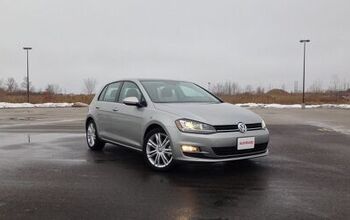
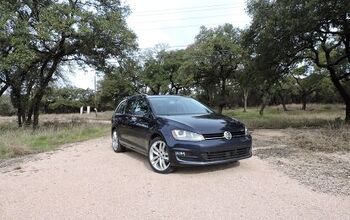



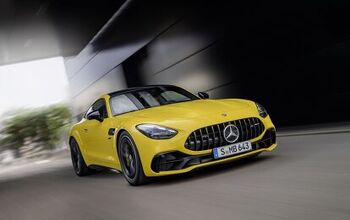
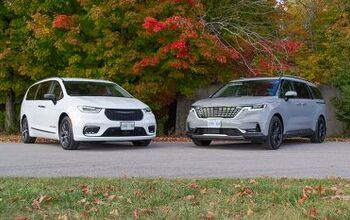

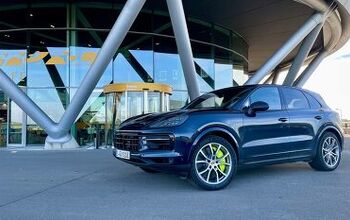


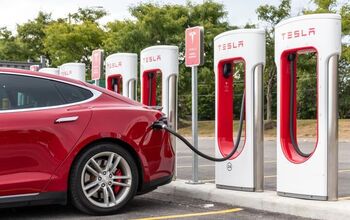
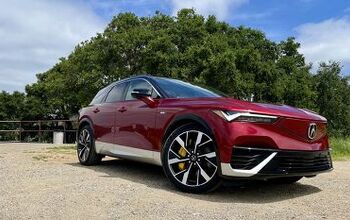
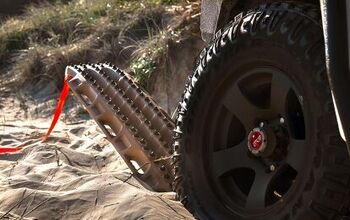

Comments
Join the conversation
I love the look of the new Mark VII Golf, especially the interior!!.....just hope that they will be as reliable as they were before even thought they are made in Mexico now ....had my 1999 Mark IV Golf GLS TDI from new to 200,000 miles and it was a rock but when I got my 2009 VW Jetta TDI it was just riddled with faults and electrical problems so traded it in for my German built 2013 Mark VI Golf TDI....really want to sport wagon now if it comes out with 4Motion but dont want the same issues as I had with the Jetta
I had the 2015 VW Golf TSI SE Sport but only for less than 1 month. The problem was the driver's seat.. Terrible seats for someone with past herniation issue with sciatica nerve issue which also caused butt numbness. Found out online at various forums and reviews that people had the SAME issues with the seats. Had to give up the car and took a small financial hit on the swap for a bigger car. Would've kept the Golf if it weren't for the seats. The car still has minor Annoyances (like any other car) with how it's built and how it's equipped but still a fun car. Noise insulation was Excellent, the ride was outstanding with the suspension soaking up bumps and bearing hearing much engine or road/tire noise! I really liked the fog lights that turned on and turned around corners and the touchscreen radio and overall feel of the car as it was solid and had a decent interior even with the leatherette (vinyl) upholstery and the mesh see-through sunroof visor which made the cabin appear more spacious. Also, I liked the Tiptronic tranmission as it worked well! Once you fold down the rear seats, there's enough room for at least 5 Full size luggages and still have enough room for some small to medium duffel bags! Impressive! Fuel economy was acceptable as it got about 27mph mixed driving, 33 hwy and 24 city. The problems with the VW Golf: 1. Cost - Slightly over $25k which was relatively pricey; the top line TSI SEL was closer to $30k! 2. Driver's seat sucked! a) Hardly any cushion resulting in a numb butt! b) NO Seat tilt function! Seriously?! Other owners posted that they wondered why VW NEVER included it! c) Hurts worse if driver/owner has/had a medical condition of the spine/leg! - Have to ask other Tall drivers how they fit as some said they could fit (>6' 4")! - NOT when you have the seat back declined instead of more upright like I do! There's NO way a taller person than myself, 6' footer, can fit that car as I barely had 1" under the head liner and 2" under the sunroof, and again, sitting at a more Upright position! 3. Questionable reliability as VW does NOT have a good history of it. - Many owners on online forums and reviews have said that when the warranty ended, they'd sell it KNOWING about the costly repairs/maintenance issues! ^ THAT is NOT reassuring to read about! 4. Center console stack width was too wide as my right knee kept hitting it. Many other owners have reported the same issue. Also, the center storage bin is a joke as well as the proprietary MDI slot instead of a USB port!